Stand Up Paddling: Cross-Training for Runners
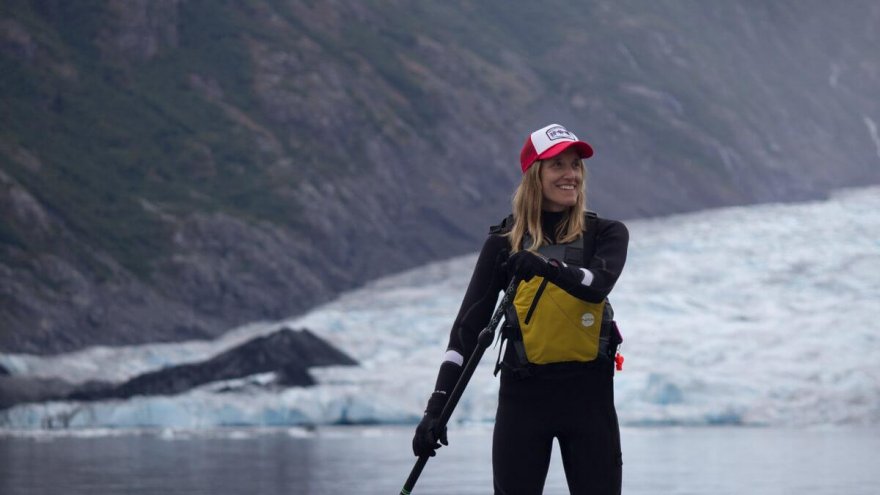
For many runners, cross-training can be a dull subject when it comes to race preparation and injury prevention. It can be especially difficult to incorporate into your schedule when training for marathon and ultra events that require longer time and mileage commitments. And cross-training simply doesn’t create the same “runner’s high”. At least, those were my thoughts before I got into paddleboarding a few years ago!
Three years ago, I invested in a paddleboard and began doing lake workouts in the summer months in Alaska. Two years ago, I made the workouts on a more regular schedule, began paying attention to technique and skills, and started to notice an interesting trend: the more I paddled, the less I noticed my chronic running overuse ailments. Over the course of that summer and into the fall, I completed 8 mountain running races and my first backcountry ultra race and logged consistently higher mileage than ever before on some pretty steep terrain. I was surprised with my low injury status compared to prior seasons.
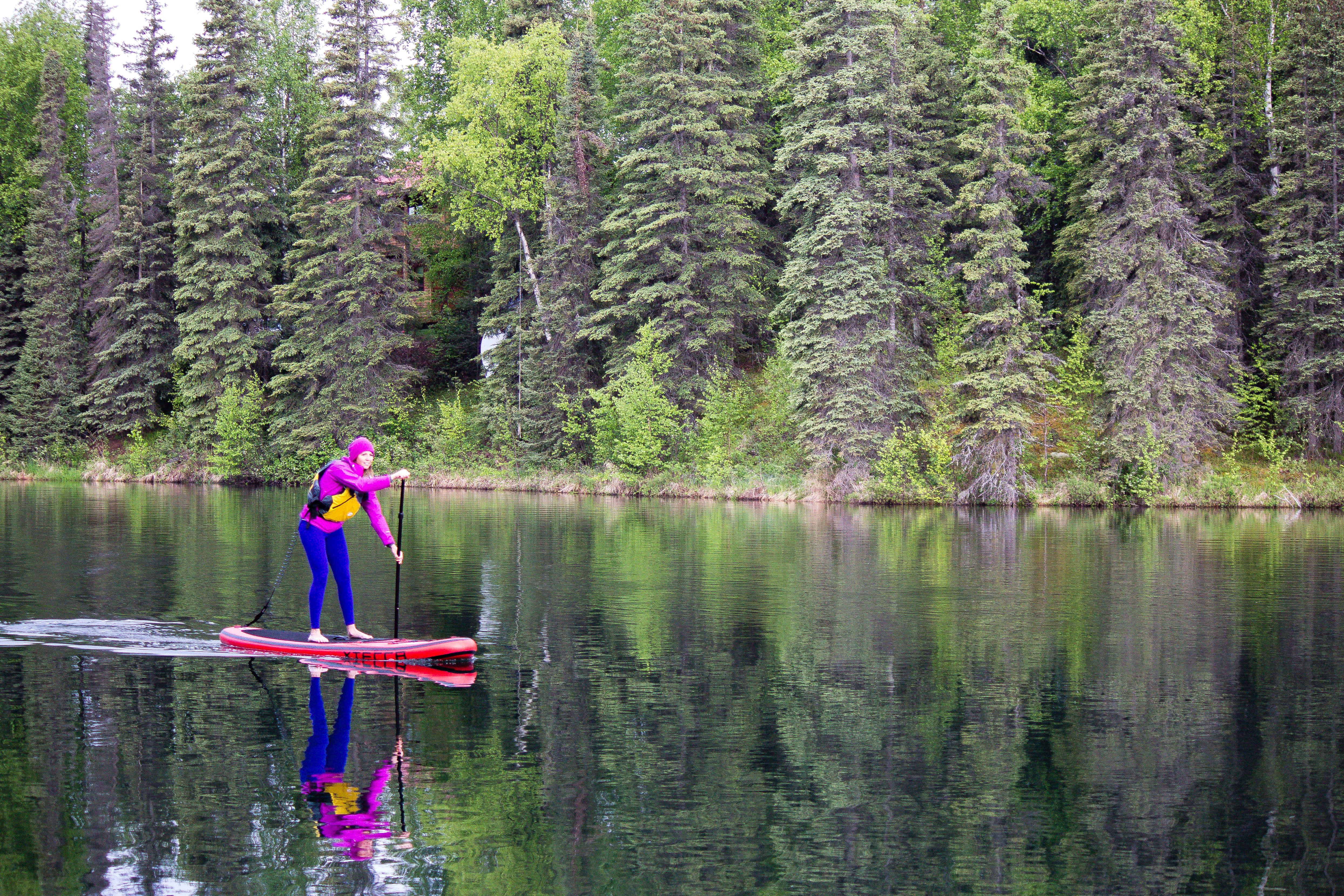
I also became hooked on stand up paddling (“SUP”). So hooked, in fact, that the following summer, a friend and I opened up a summer business, Alaska Wilderness SUP! That season I logged over 65 days of paddling while still running and racing a fair amount, and noticed something interesting: my usual ailments of achilles tendonitis, IT band irritation, and sciatica were no longer an issue!
Paddleboarding is clearly a good balance and upper body/trunk/hip workout when done correctly, but does this translate to improved running form and a decrease in overuse injuries? As a physical therapist, I decided to dig deeper into this topic to see if there were any studies that supported my theory.
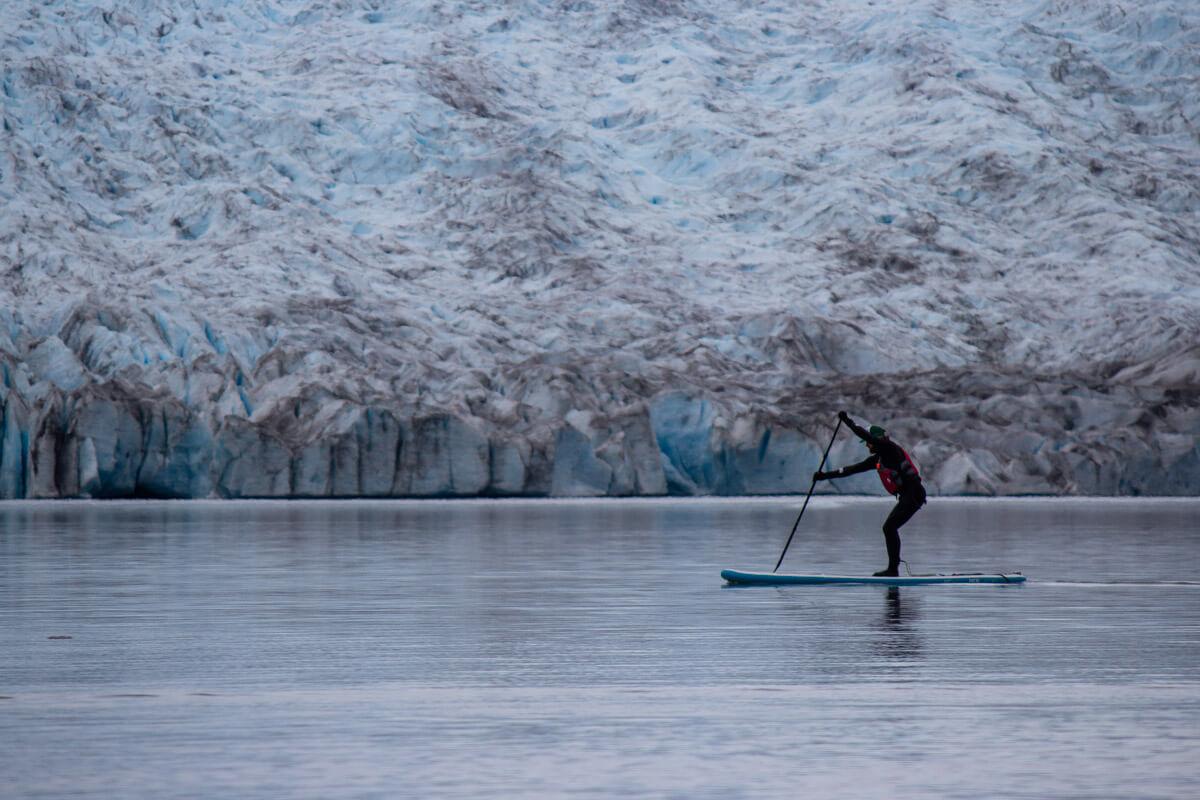
What muscles does paddleboarding work?
In 2013, Ruess and colleagues1 evaluated the muscle activity via surface electromyography (EMG) of individuals on a land-based SUP simulation machine and of individuals paddling on the water on recreational and racing paddleboards. They evaluated the bilateral muscle activity in both beginner level paddlers and more experienced paddlers of 8 different core, hip, chest and back muscles and analyzed their activity across the different phases of the technique. This was the first study of its kind and they found that all eight muscles showed activation in both land (machine testing) and water scenarios. However, the on-water evaluation showed a higher and longer-duration muscle activation of back and core muscles (rectus abdominis, erector spinae, multifidus, and external obliques). Authors theorized that the balance challenge of paddling over the water positively impacts the muscle engagement, and that these muscles have a key role in transferring the power between the paddle and the board.
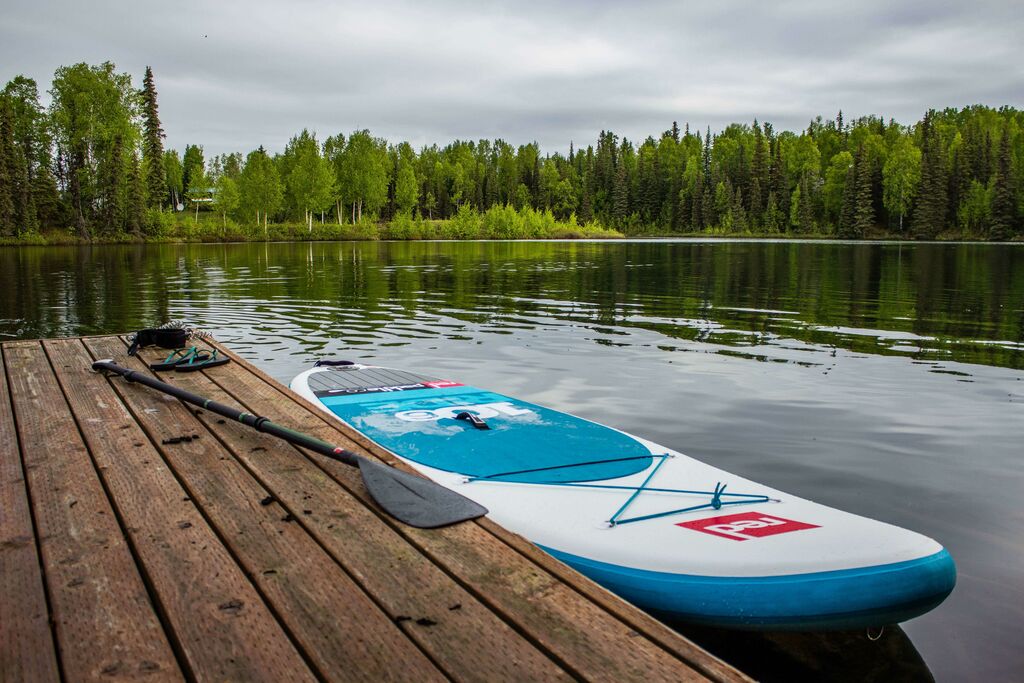
How do these muscle groups impact my running?
The back and core muscles in the above study are implicated across numerous studies to have an important role in injury prevention and treatment for a large variety of orthopedic injuries, from spine pain and sciatica to hip, knee and ankle complaints. The more strength your core area has, the better and more even dispersion of shock you’ll have as you pound out the miles. Rivera2 (2016) summarizes that “Imbalances or deficiencies in the core muscles can result in increased fatigue, decreased endurance, and injury in runners.”
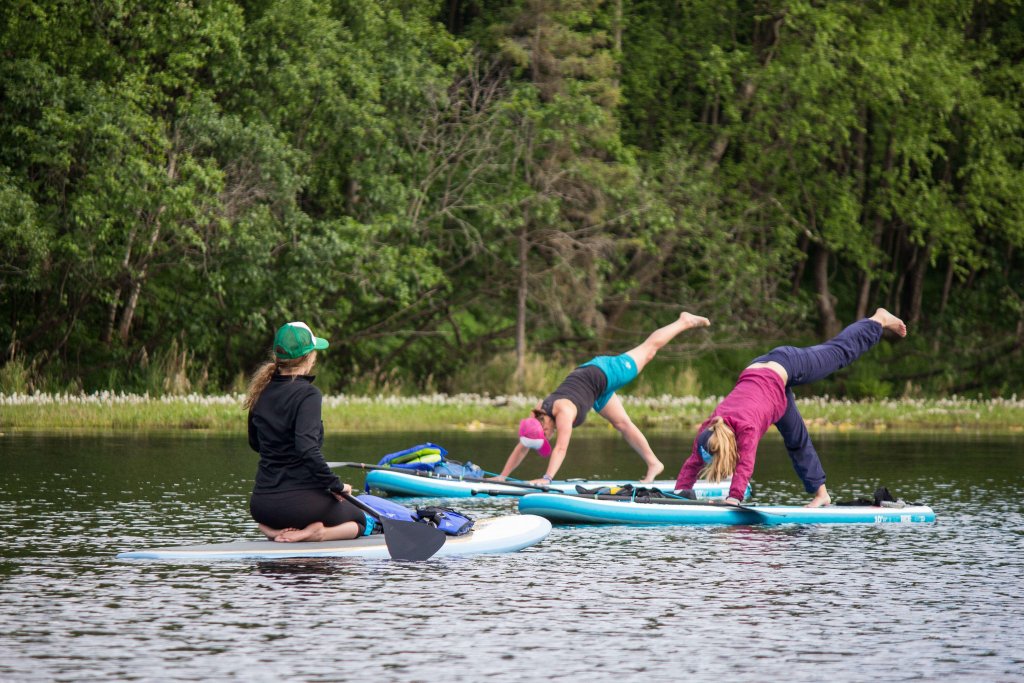
Are there other ways that Paddleboarding improves performance?
Another study by Ruess et al.3 in Austria (2013) evaluated balance performance pre- and post-paddle and heart rate changes while exercising on paddleboards. They found that all subjects’ on-land balance improved following a 30-minute paddling session, regardless of age. They also noted that beginners heart rates increased to the aerobic zone while paddling, and more experienced paddlers were able to exercise in both the aerobic and anaerobic heart rate zones. They attributed the difference in heart rate zone to greater balance challenges that impacted paddling pace in those who were not as accustomed to being on a SUP. Thus, even if you are NOT an experienced paddler, exercising on a paddleboard can benefit your muscle strength and balance while also providing an aerobic workout.
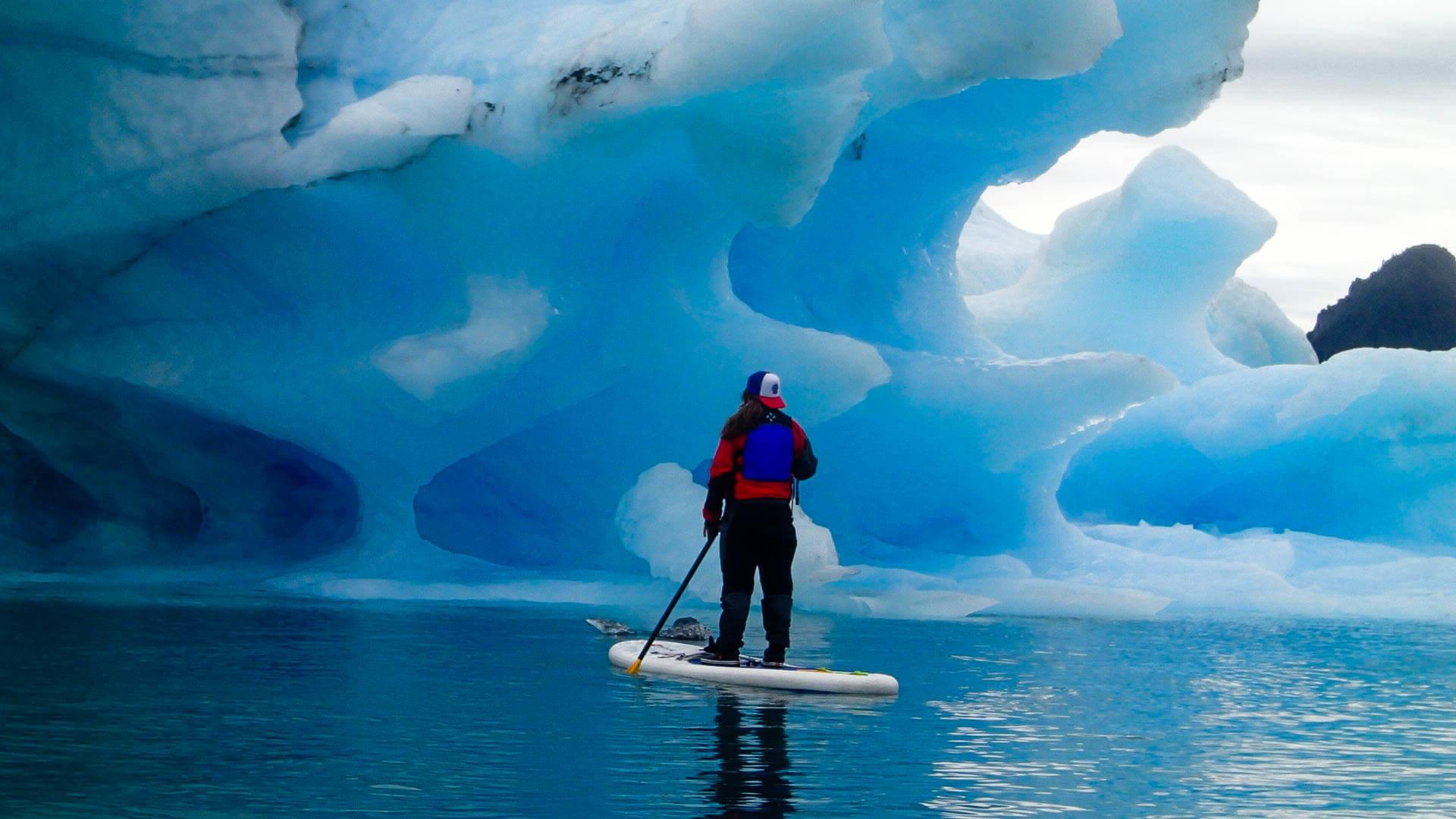
How can I apply this to my training program?
It’s evident that stand up paddling works important core, back and hip muscles. It’s clear that strengthening these muscles can prevent and treat common overuse injuries experienced by runners. This is a new area of research and no studies have evaluated the optimal training parameters for the minimum amount of stand-up-paddling required to provide protective benefits. I would hypothesize that 2 separate hour-long paddling sessions per week could be sufficient, as this is the amount where I personally began to notice a change in injuries.
The best part of all of this is that it can reduce the monotonous, tedious gym-based exercises that we runners often dread as necessary evils to keep us in balance. Core and hip exercises on a mat are important, but not always performed with the right dedication, form, progression and dosage to create change in sport movement patterns. Traditional gym cross training machines like the elliptical or the spinning bike all work the same “plane” of major muscle groups that we use in running and definitely play an important role, but they don’t have as high of a natural emphasis on your core, back muscles and lateral hip stabilizers.
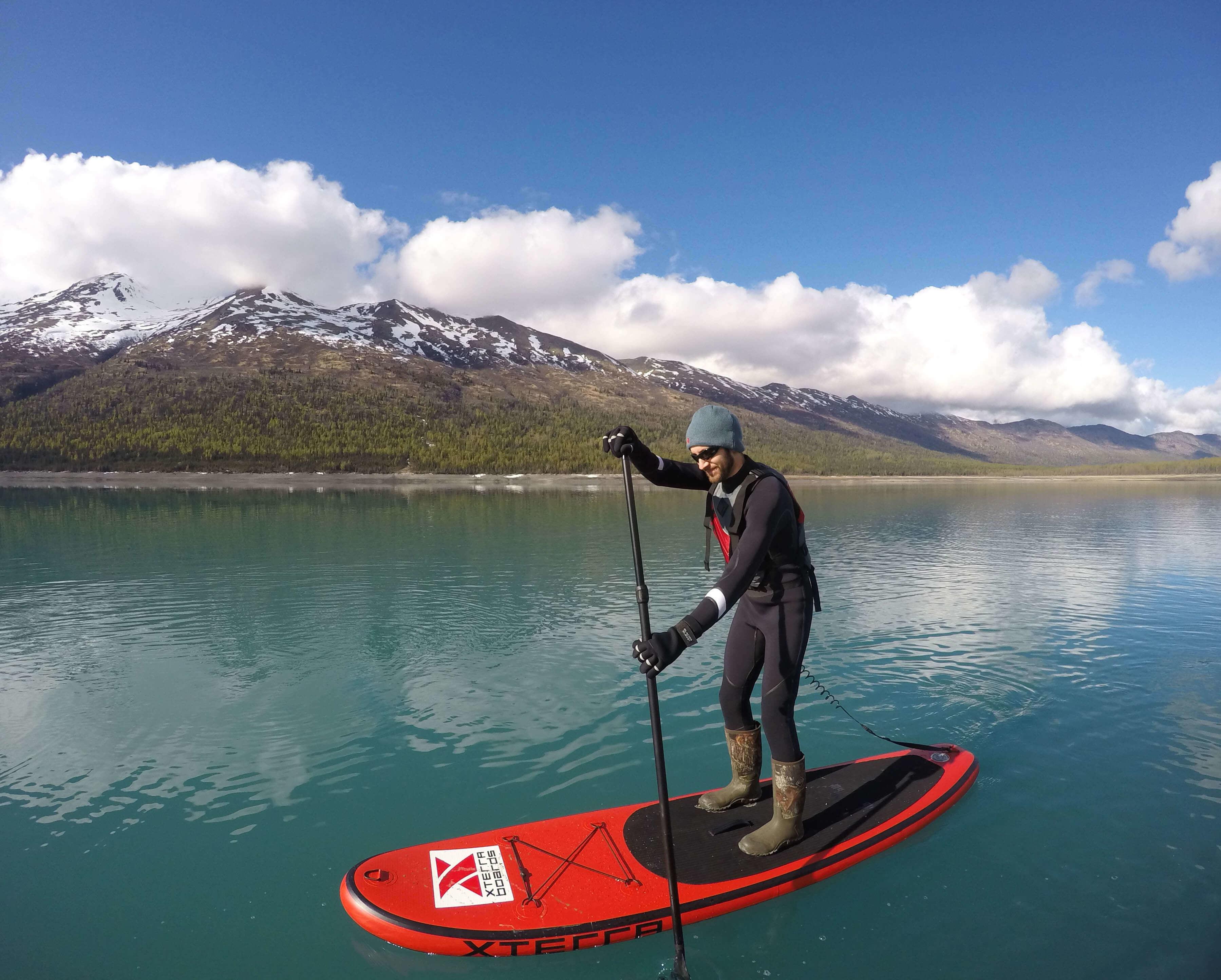
Paddleboarding, when done properly, has more potential to activate these “neglected” muscles that are so important in injury prevention – plus you get the added benefit of being outside with a fun activity to motivate your “core” workout! If you’re a newcomer to the sport of stand up paddling, I definitely recommend that you take a private lesson to ensure proper technique before you begin training on the water. More and more companies are popping up that offer fitness classes on paddleboards, another great option for your spring and summer cross-training. So as the lakes begin to thaw (for us unlucky ones in northern areas), be sure to build some SUP cross training into your schedule – it’s an investment that you won’t regret!
Latest Articles
 Is Running on a Treadmill Easier Than Running Outside?Runners have their own preferences, whether it is treadmill running, running outside on the road, or exploring trails. So...
Is Running on a Treadmill Easier Than Running Outside?Runners have their own preferences, whether it is treadmill running, running outside on the road, or exploring trails. So... Is It OK to Use Trail Running Shoes on the Road?While trail running shoes can be used on roads, especially in situations where a runner encounters mixed terrains or pref...
Is It OK to Use Trail Running Shoes on the Road?While trail running shoes can be used on roads, especially in situations where a runner encounters mixed terrains or pref... How to Fix Sore Quads After Running?Rest, ice, gentle stretching, and over-the-counter pain relievers can help soothe sore quads after running. Also, ensure ...
How to Fix Sore Quads After Running?Rest, ice, gentle stretching, and over-the-counter pain relievers can help soothe sore quads after running. Also, ensure ... 10 Fruits With The Most Electrolytes to Replace Sports DrinksThese fruits are high in electrolytes such as potassium, magnesium, and calcium, essential for hydration, muscle function...
10 Fruits With The Most Electrolytes to Replace Sports DrinksThese fruits are high in electrolytes such as potassium, magnesium, and calcium, essential for hydration, muscle function...

